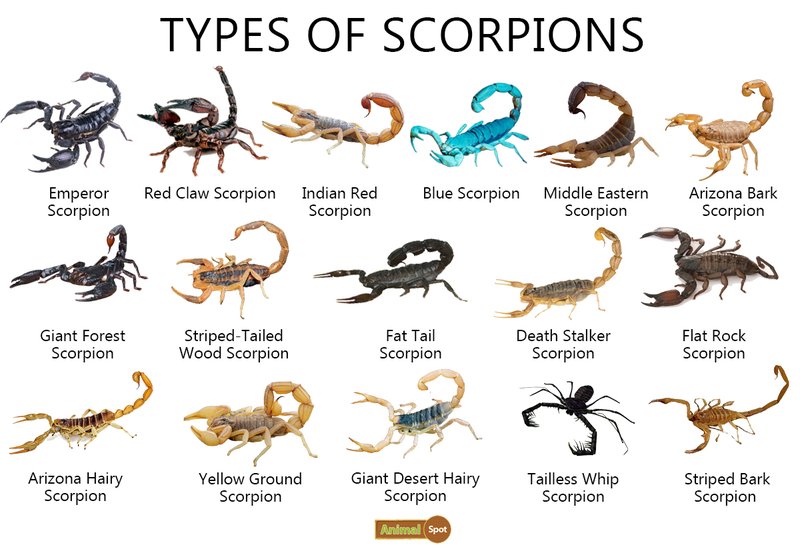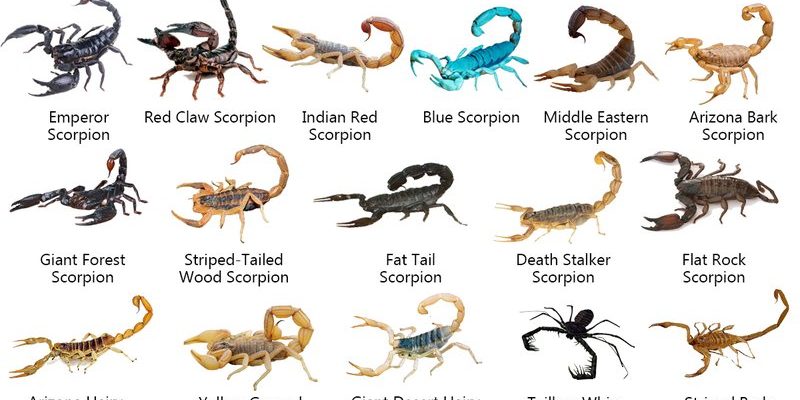
In this article, we’ll dive into the characteristics that differentiate the Deathstalker scorpion from other scorpion species. Think of it as peeling an onion—layer by layer, we’ll discover the traits that make the Deathstalker unique. From its habitat to venom potency and behavior, we’ll explore it all so you can understand what makes this scorpion tick. Ready to unearth the secrets of the Deathstalker and its relatives? Let’s get started!
What is the Deathstalker Scorpion?
The Deathstalker scorpion, scientifically known as *Leiurus quinquestriatus*, is often regarded as one of the most dangerous scorpions in the world. With its bright yellow color and long, slender pincers, it looks like something straight out of an action movie. Found primarily in desert regions of North Africa and the Middle East, this scorpion thrives in hot environments where many other species might struggle.
But don’t be fooled by its appearance—this little guy packs a punch with its venom. The venom of the Deathstalker contains a blend of neurotoxins that can cause severe pain and other symptoms in humans. While it’s not usually lethal to healthy adults, it can be particularly dangerous for children and those with underlying health conditions. You might be wondering, how does this compare to other scorpion species?
Venom Potency: A Critical Difference
The venom of the Deathstalker is often cited as one of the most potent among scorpion species. In fact, it ranks right up there with the venom of the infamous Arizona bark scorpion. Here’s how the Deathstalker’s venom differs significantly from other scorpions:
- Neurotoxic Components: The venom contains a mix of neurotoxins that can affect the nervous system. This is what causes the intense pain, swelling, and even respiratory problems in victims.
- Medical Potential: Interestingly, researchers are studying Deathstalker venom for its potential medicinal properties, particularly its use in cancer treatment. So, it’s not all doom and gloom!
- Comparison to Other Species: In contrast, many other scorpion species have venom that primarily focuses on subduing prey rather than threatening humans. The venom of a common species like the emperor scorpion is far less potent and typically causes only mild discomfort.
Understanding the potency of the Deathstalker’s venom gives you a glimpse into why it is often viewed with such caution.
Physical Characteristics: Size and Color
When it comes to physical traits, the Deathstalker is definitely a standout. Its size and color set it apart from many of its cousins.
- Size: The Deathstalker typically measures around 3 to 4 inches long. While that’s not huge, it’s certainly big enough to catch your attention—and your fear!
- Color: Its bright yellow coloration is another defining feature. This helps it blend into the sandy environments it calls home, giving it great camouflage against predators.
- Comparison to Other Species: For example, take the Asian forest scorpion. It’s larger, reaching up to 8 inches, and has a more robust, dark brown or black body. The difference in size and color can affect their interactions with other animals and habitats.
Physical characteristics often lead to different behaviors and hunting styles, which play a crucial role in their ecosystems.
Habitat and Distribution of the Deathstalker
Where the Deathstalker calls home is just as important as its physical characteristics. This scorpion primarily inhabits arid regions and can often be found hiding under rocks, within crevices, or even burrowed underground.
- Geographic Range: Found mostly in North Africa and the Middle East, this scorpion thrives in hot, dry environments.
- Adaptability: Deathstalkers are incredibly adaptable, which helps them survive in harsh conditions where food and water are scarce.
- Comparison to Other Species: Other species, like the yellow fat-tailed scorpion, may inhabit a wider range of environments, from deserts to more humid areas. Their habitats can influence their diets and behaviors significantly.
Understanding where the Deathstalker lives gives insight into its survival tactics and behaviors, making it easier to grasp how it interacts with its environment.
Behavior and Hunting Techniques
Behaviorally, the Deathstalker exhibits some interesting traits that differentiate it from other scorpion species.
- Activity Levels: Unlike some species that may be more passive, the Deathstalker is active and aggressive when hunting. It often hunts at night, using its acute sense of touch to locate prey.
- Prey Selection: This scorpion primarily feeds on insects and other small arthropods. It uses its powerful pincers to capture its prey and injects venom to immobilize it.
- Comparison to Other Species: In contrast, the emperor scorpion is known for being more docile and often relies on ambush tactics to catch prey. The differences in behavior can lead to varied survival strategies among species.
Understanding how the Deathstalker behaves in the wild gives a clearer picture of its role in the ecosystem.
How to Stay Safe: Handling Scorpions
If you ever find yourself in an area inhabited by scorpions, you might be wondering how to stay safe—especially from the notorious Deathstalker.
- Awareness: Always be aware of your surroundings. When hiking or exploring rocky areas, watch where you step and place your hands.
- Protective Gear: If you’re working in known scorpion habitats, consider wearing gloves and closed-toe shoes. It’s a simple precaution that can go a long way.
- Emergency Response: If you’re stung, seek medical attention immediately, especially if you suspect it could be a Deathstalker sting. Symptoms can escalate quickly.
Being aware and prepared can save you a world of trouble, making outdoor adventures safe and enjoyable.
When you take a closer look at the Deathstalker scorpion, it’s easy to see why it holds a unique place in the world of arachnids. From its potent venom to its striking appearance and aggressive behavior, it’s a creature that captures both fear and fascination. Understanding its differences compared to other species not only fuels our interest but also enhances our respect for these remarkable creatures.
So, the next time you hear someone mention scorpions, you’ll have a deeper appreciation for what makes the Deathstalker stand out. With knowledge comes understanding, and hopefully, that makes you feel a little less anxious and a bit more curious about these fascinating creatures. Whether you’re studying them or simply enjoy nature’s wonders, remember that each species has its strengths, weaknesses, and role in the grand tapestry of life.

